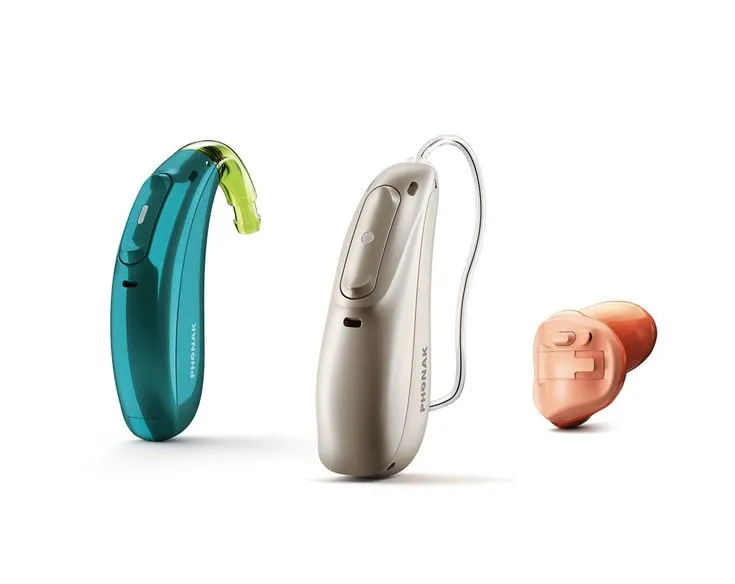Hearing loss greatly affects daily life quality. Modern technology makes it much easier to manage this challenge. One of the most common solutions is a hearing aid. But what are the key differences between in-the-ear (ITE) and behind-the-ear (BTE) devices?
Main Purpose of Hearing Aids
The primary function is to amplify surrounding sounds and transmit them to the brain, creating a natural listening experience.
What Is an In-the-Ear Hearing Aid
Design and Build
Placed directly inside the ear canal, making it nearly invisible.
Who It Suits
Recommended for mild to moderate hearing loss.
Advantages
- Extremely discreet
- Comfortable to wear
- Provides a natural sound flow
Disadvantages
- Small size means shorter battery life
- More sensitive to earwax
What Is a Behind-the-Ear Hearing Aid
Structure and Function
The main component sits behind the ear and delivers sound through a thin tube into the ear canal.
Best For
Ideal for moderate to severe hearing loss.
Advantages
- Strong sound amplification
- Larger battery for longer operation
Disadvantages
- More visible
- Can be uncomfortable for glasses wearers
Key Differences
Appearance and Comfort
ITE devices fit completely inside the ear and are less noticeable. BTE models are larger and more visible.
Sound Quality and Technology
Both provide high-quality sound, but BTE models often offer more power.
Battery and Power Use
BTE devices usually last longer thanks to larger batteries, while ITE units require more frequent charging or replacement.
Maintenance and Cleaning
ITE devices need more frequent cleaning.
Suitability by Age Group
BTE devices are easier to monitor for children. Adults and seniors can comfortably choose either, depending on personal preference.
Special Lifestyle Considerations
Athletes may prefer the secure fit of ITE models. People working in noisy environments may choose the stronger BTE amplification.
Price and Budget
BTE models can be more expensive due to advanced technology but tend to have a longer lifespan.
Technological Features
Both types often offer Bluetooth connectivity, mobile app control, and water resistance.
Role of a Specialist
Audiometry and tympanometry tests are essential for proper selection. Choosing without expert advice can be risky.
Care and Maintenance Tips
Regular cleaning, timely battery changes, and professional servicing ensure long-term reliability.
Future of Hearing Technology
Expect AI-powered models, stronger batteries, and even more compact designs in the coming years.
First Step in Selection
Visit a professional hearing center for personalized testing to find the best solution.
Conclusion
In-the-ear and behind-the-ear hearing aids meet different needs. A professional consultation and personal trial are key to finding the perfect fit.
Frequently Asked Questions
- Can in-the-ear devices be used in water?
Some models are water-resistant, but not all. - What is the typical battery life for both types?
BTE devices usually last longer. - Which model is better for children?
BTE models are recommended for easier monitoring. - Can in-the-ear devices cause allergies?
Hypoallergenic materials are available in many models. - Do all hearing aids have Bluetooth?
Most modern devices now include Bluetooth as a standard feature.



